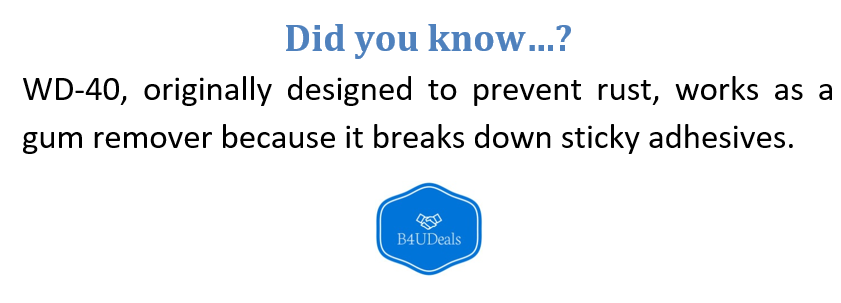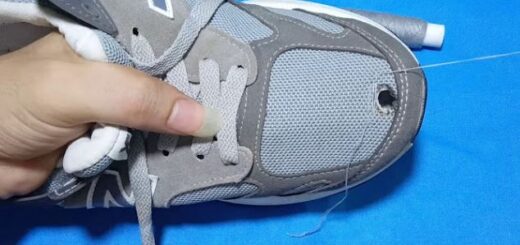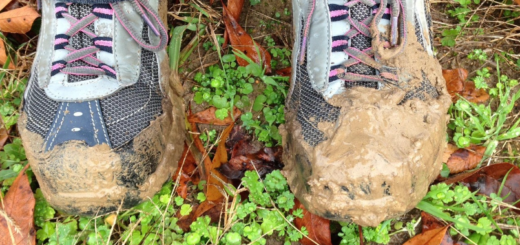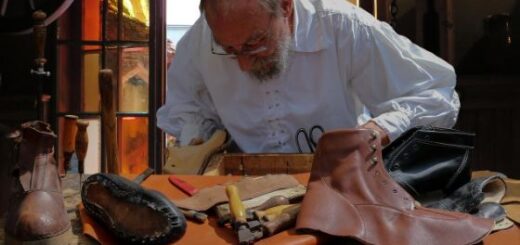A Practical Guide to Removing Chewing Gum from Footwear
Stepping in gum is one of those annoying surprises that can quickly sour your day, especially if it’s stuck to a favorite pair of shoes. While it may seem like a tricky mess to deal with, the good news is that there are multiple effective techniques you can use—whether you’re at home, outdoors, or even without access to specialized products. This guide explores various strategies to get your soles back to normal, using common household items and simple steps.

Using the Freezer for Easy Removal
One of the most dependable ways to deal with gum stuck to a shoe is to take advantage of freezing temperatures. The cold hardens the gum, making it brittle and much easier to remove in one solid piece.
To start, place your shoe inside a plastic bag—ensure the sticky area is pressed directly against the plastic. If the entire shoe doesn’t fit, that’s fine. Just be sure the gum makes solid contact with the bag’s surface. Then, carefully place the bagged shoe in the freezer, ideally laying it flat to avoid distortion. Leave it undisturbed for at least one hour. Once frozen, remove the bag and gently peel it away. With luck, the gum will come off cleanly, stuck to the plastic and not your shoe.
If any bits remain, gently scrape them off using a dull-edged tool such as a plastic knife or spatula.
Applying Ice Cubes as an Alternative
If you don’t have the freezer space or need to act quickly, ice cubes can work just as well. This approach focuses on direct freezing rather than enclosing the shoe.
Begin by placing several ice cubes in a resealable plastic bag. Rest the affected part of the shoe against the bag, gum side down. The idea is to allow the gum to freeze without wetting the shoe. If needed, hold the ice-filled bag firmly against the gum for several minutes. As the gum chills and solidifies, you’ll notice it becoming less sticky and more crumbly.
At this stage, use a dull object—like a butter knife or old credit card—to scrape the gum away. It should come off with relative ease, leaving minimal residue behind.

Loosening the Gum with WD-40
WD-40, a product commonly used to eliminate squeaks and loosen rusted joints, can also help dislodge gum from shoes. It works by penetrating the gum’s sticky matrix, reducing its grip.
To use this method, spray a generous amount of WD-40 directly onto the gum and surrounding area. Let it soak for a minute or two. This waiting period allows the solvent to weaken the gum’s bond with the shoe. Afterward, wipe the gum away using a disposable cloth or paper towel.
Once the gum has been removed, you’ll want to clean the area with mild soap and water to remove any remaining oily residue from the WD-40.
Tackling the Problem with Peanut Butter
Peanut butter may seem like an odd solution, but its oil content can help soften gum and break down its adhesive qualities.
To apply this method, spread a thick layer of creamy (not chunky) peanut butter over the gum. Let it sit for 10 to 15 minutes so that the oils can work their magic. After the waiting period, use a brush—preferably one with stiff bristles—to scrub at the gum. The peanut butter should lift the gum away from the shoe’s surface.
Finish up by rinsing the sole under cold water, using a sponge or soft cloth to remove any remaining traces of peanut butter and gum.
Rubbing Sand into the Gum While Outdoors
If you’re outside and gum sticks to your shoe, there’s no need to panic. You can use nature to your advantage. Sand, dry soil, or fine dirt can help dry out and crumble the gum, making it easier to remove.
Start by taking off your shoe and finding a patch of dry sand. Sprinkle it over the gum, covering it completely. Then, use a stick, twig, or even your fingers to rub the sand into the gum in a circular motion. This friction will slowly start to pull the gum apart.
Continue this process, adding more sand as needed, until the gum is sufficiently broken down and can be brushed away. This method is a lifesaver in a pinch, especially if you’re hiking or walking in a rural area.
Dissolving the Gum with Solvents
If freezing or scraping doesn’t appeal to you, there are chemical options that dissolve gum directly.
One such solvent is lighter fluid (naphtha), which has strong degumming capabilities. However, it must be used with extreme caution. Only apply it in well-ventilated areas, away from flames or heat sources. Soak a piece of cloth in the fluid and gently dab it onto the gum. The gum should start to soften and disintegrate.
Another choice is acetone-based nail polish remover. Like lighter fluid, acetone helps break down the gum’s chemical structure. Dab the remover onto the gum using a cotton pad or rag, and wait for the gum to begin dissolving. Be cautious, though—acetone can damage certain shoe materials, especially suede or patent leather.
After using any solvent, thoroughly clean the area with soap and water to eliminate any leftover chemicals.
Applying Olive Oil for a Gentle Touch
Olive oil, often found in kitchens, is another gentle option for gum removal. Its lubricating properties make it ideal for shoes that might be sensitive to harsher chemicals.
To use, pour a small amount of olive oil onto a paper towel and gently rub it over the gum. Allow the oil to soak for a minute. Then, with the tip of a small blunt tool—like a toothpick or plastic scraper—begin prying the gum away. Because the oil has weakened the gum’s adhesion, it should lift more easily.
Once finished, clean the area with a mild dish soap to avoid any oil stains on the shoe.
Cleaning Up After Removal
No matter the method used, a bit of cleanup is always necessary after the gum has been dislodged. In most cases, a simple combination of warm water and dish soap will be sufficient. Use a soft sponge or cloth to wipe the affected area thoroughly.
If odors linger, especially from peanut butter or solvents, sprinkle a little baking soda on the shoe sole and let it sit for 15 minutes before rinsing it off. This step neutralizes any lingering smells and restores freshness.
For leather shoes, consider applying a conditioner afterward to restore any oils lost during the cleaning process.

Preventing Future Gum Encounters
While no method can completely shield you from gum-related mishaps, there are a few things you can do to reduce the chances of getting gum on your footwear.
Pay attention to where you walk, especially in crowded urban areas, parks, and near public seating. Gum is often discarded carelessly in these spots. Opt for shoes with patterned or textured soles, as they make gum less likely to adhere firmly and easier to clean if it does.
Carrying a travel-sized pack of wipes or a small plastic scraper in your bag can also help you act fast before the gum settles deeply into the grooves of the sole.
Final Thoughts
Removing gum from a shoe may feel frustrating in the moment, but with the right method, it’s far from impossible. Whether you choose to freeze, dissolve, scrub, or lubricate, each approach has its own advantages depending on your available resources and the type of shoe involved. What’s important is to act quickly and avoid letting the gum set in further.
With these practical solutions at your disposal, your favorite shoes can be saved from the sticky grip of a thoughtless chewer’s discarded gum.
FAQs about Removing Gum from Shoes
What is the fastest way to remove gum from a shoe?
Freezing the gum using ice cubes or placing the shoe in a plastic bag in the freezer is one of the quickest and cleanest methods.
Can household items remove gum from shoes?
Yes, common items like peanut butter, olive oil, WD-40, and nail polish remover can effectively remove gum.
Will WD-40 damage my shoe?
WD-40 is generally safe for rubber soles but should be avoided on leather or fabric, as it may leave stains.
Can I use peanut butter on any shoe type?
Use it only on rubber or synthetic soles. Avoid fabric or suede shoes, as the oils can leave stains.
How do I remove gum without making a mess?
Freezing or using sand outdoors minimizes mess by hardening the gum or drying it out for easy scraping.

Is using acetone safe for all shoes?
No, acetone can damage materials like suede, patent leather, or rubber. Always test a small area first.
What if the gum doesn’t come off completely?
Repeat the chosen method or combine techniques, such as freezing followed by scraping, for stubborn residue.
Can oil-based methods stain shoes?
Yes, oils like olive oil and peanut butter may leave marks on absorbent materials. Clean thoroughly afterward.
Is it safe to use lighter fluid on shoes?
Use extreme caution. Lighter fluid is flammable and should only be used in well-ventilated, flame-free areas.
How do I clean up after removing the gum?
Wipe the area with soap and water, and use baking soda if needed to eliminate odors or oily residues.







